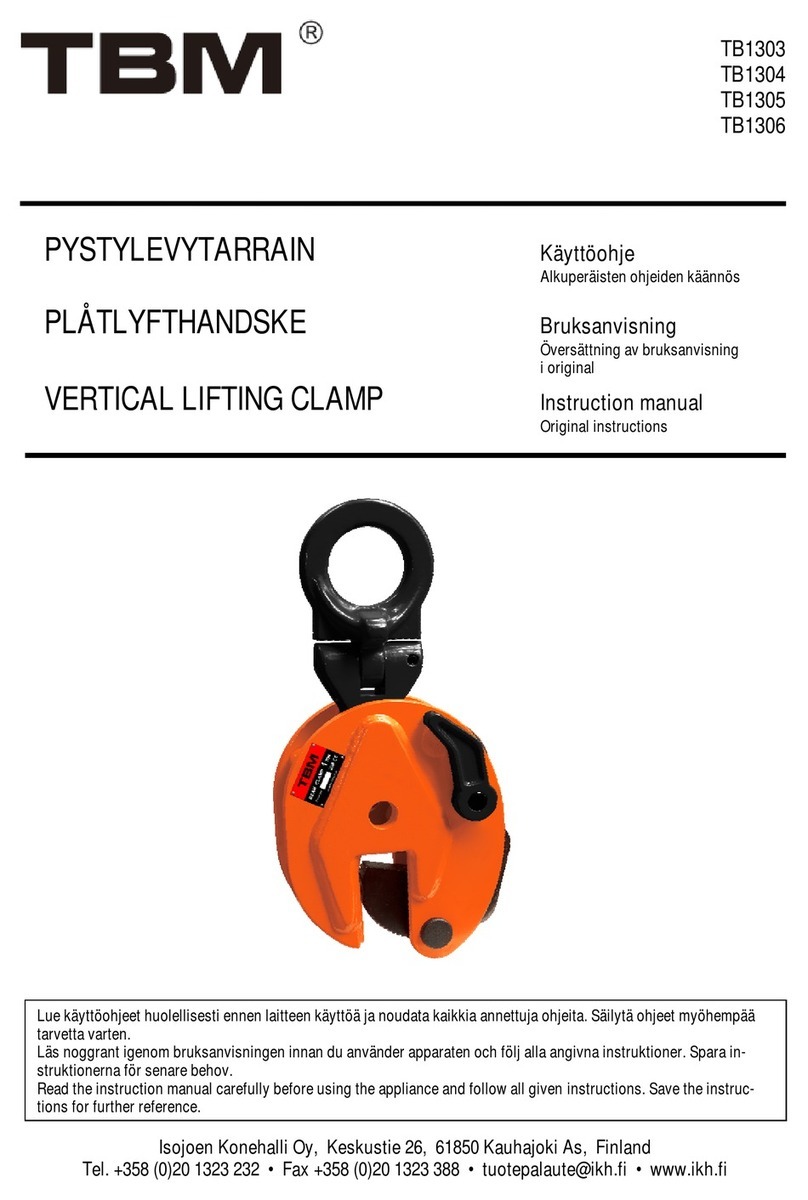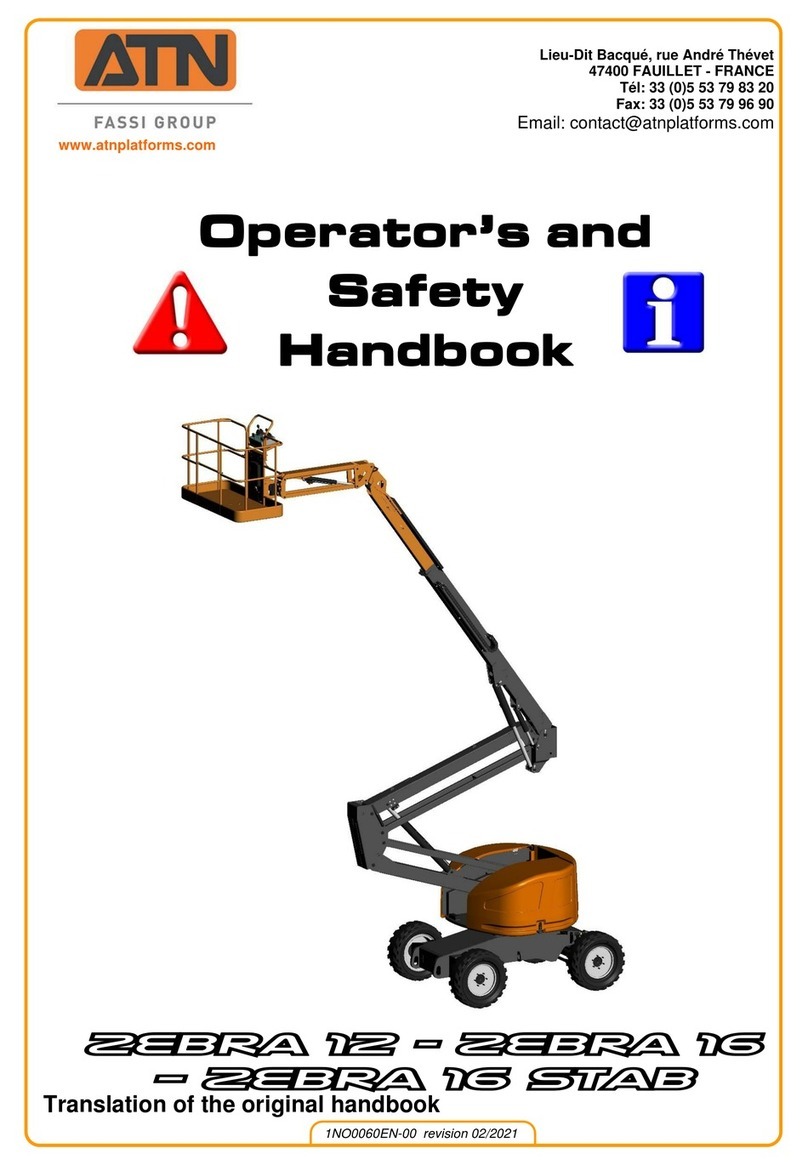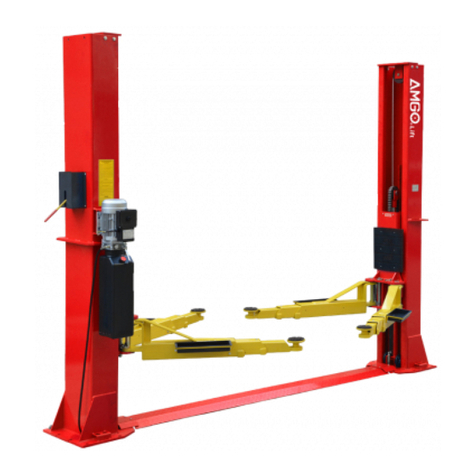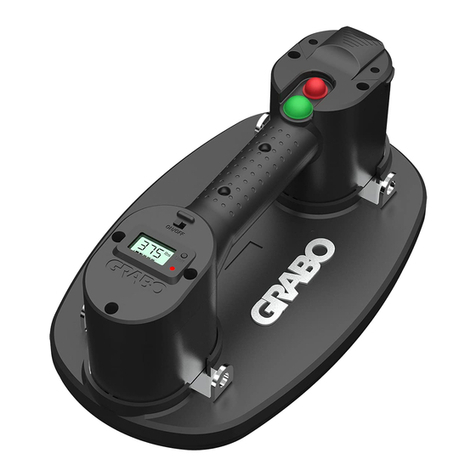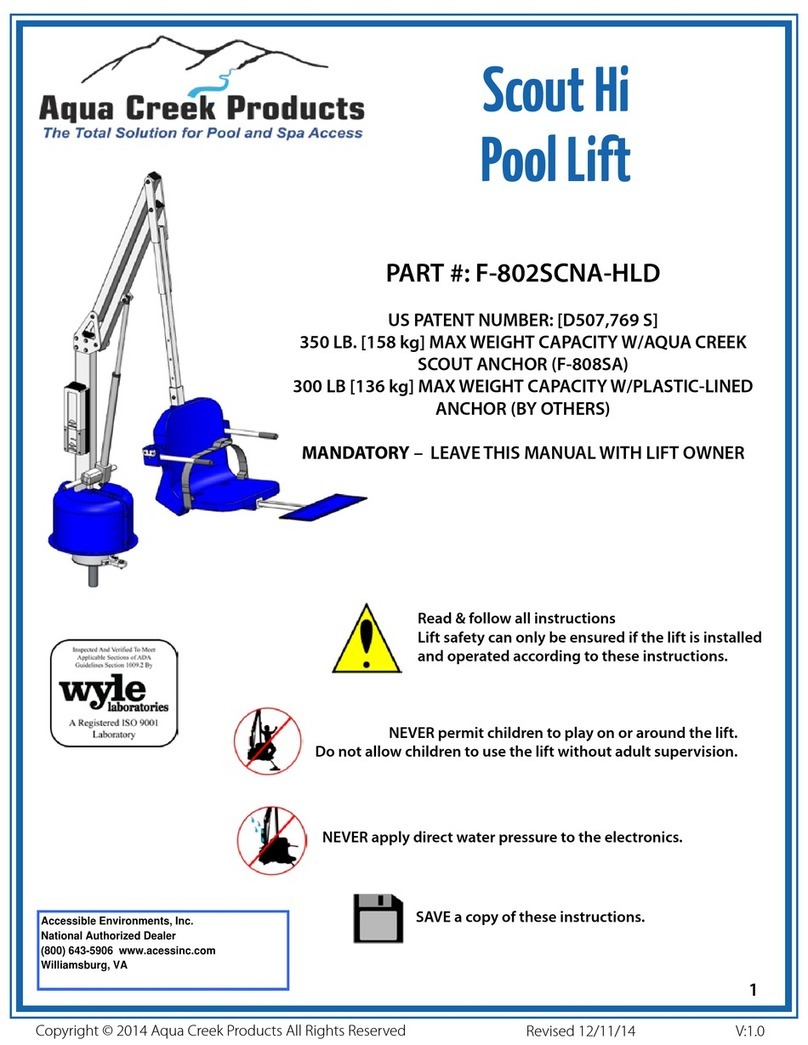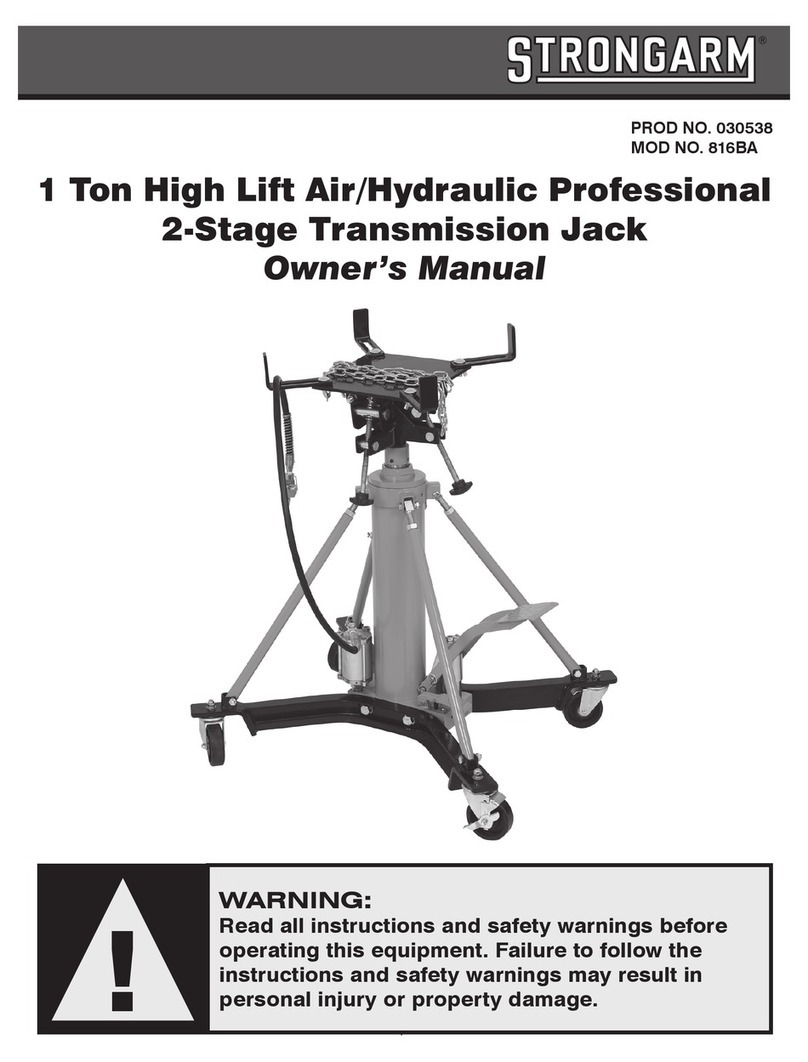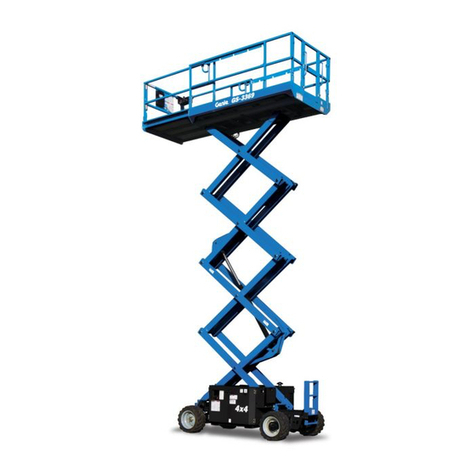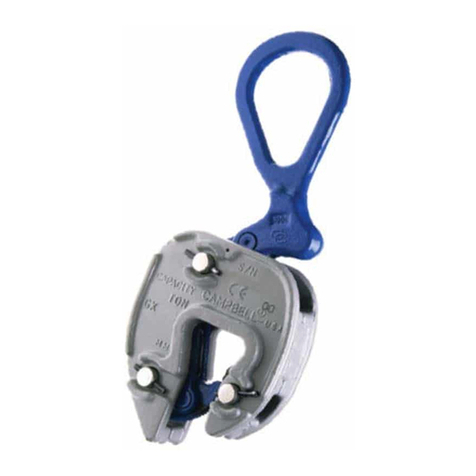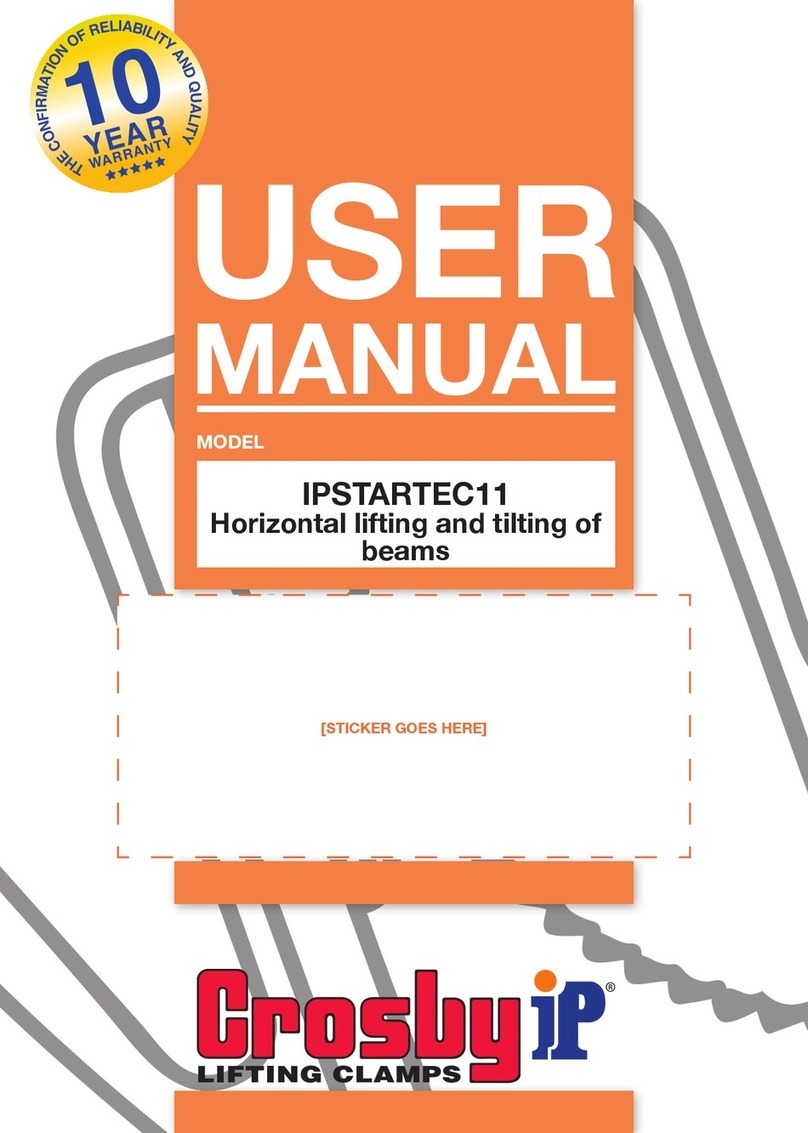STRONGA HookLoada HL180T Guide


HL180T
1
Contents
1. INTRODUCTION...................................................................................................................3
1.1. B
ASIC INTRODUCTION
.......................................................................................................3
1.2. U
SING THIS MANUAL
........................................................................................................4
2. PRODUCT DESCRIPTION....................................................................................................6
2.1. G
ENERAL DESCRIPTION
....................................................................................................6
2.2. T
ECHNICAL SPECIFICATIONS
.............................................................................................8
2.3. P
RODUCT IDENTIFICATION
................................................................................................9
2.4. D
RAWBAR HITCHING SYSTEM
.........................................................................................10
2.5. H
YDRAULIC SYSTEM
.......................................................................................................11
2.6. P
NEUMATIC SYSTEM
.......................................................................................................13
2.7. E
LECTRICAL SYSTEM
......................................................................................................14
3. SAFETY INSTRUCTIONS ..................................................................................................16
3.1. G
ENERAL SAFETY INSTRUCTIONS
...................................................................................16
3.2. C
ONNECTING AND DISCONNECTING FROM THE TRACTOR
................................................17
3.3. L
OADING AND UNLOADING OF THE TRAILER
...................................................................17
3.4. H
YDRAULIC AND PNEUMATIC INSTALLATION
.................................................................17
3.5. T
YRES
.............................................................................................................................18
3.6. S
ERVICE AND MAINTENANCE
..........................................................................................18
3.7. S
AFETY AND INFORMATION DECALS
...............................................................................19
4. OPERATION AND USE ......................................................................................................23
4.1. P
REPARATION FOR OPERATION
.......................................................................................23
4.2. C
ONNECTING TO THE TRACTOR
......................................................................................23
4.3. O
PERATION AND USE WITH REMOTE CONTROL
(
WHERE IS FITTED
)..................................24
4.4. L
OADING AND UNLOADING A CONTAINER
.......................................................................24
4.4.1. Preparation for operation .........................................................................................24
4.4.2. Operating procedure .................................................................................................26
4.5. T
IPPING A CONTAINER
....................................................................................................29
4.6. D
ISCONNECTING FROM THE TRACTOR
.............................................................................30
5. PERIODIC INSPECTION AND MAINTENANCE ........................................................31
5.1. P
ERIODIC INSPECTION
.....................................................................................................31
5.2. M
AINTENANCE OF CHASSIS
.............................................................................................34
5.3. M
AINTENANCE OF AXLE BEARINGS
................................................................................35
5.4. M
AINTENANCE OF BRAKES
.............................................................................................35
5.5. M
AINTENANCE OF TYRES
................................................................................................37
5.6. M
AINTENANCE OF HYDRAULIC SYSTEM
..........................................................................37
5.7. M
AINTENANCE OF PNEUMATIC SYSTEM
..........................................................................38
5.8. L
UBRICATION
.................................................................................................................38
6. TROUBLESHOOTING......................................................................................................42
7. ADDITIONAL INFORMATION ......................................................................................43

HL180T
2
7.1. T
RAILER DOCUMENTS
.....................................................................................................43
7.2. W
ARRANTY CONDITIONS
................................................................................................43
7.3. T
RANSPORTATION
..........................................................................................................44
7.4. W
ITHDRAWAL OF THE TRAILER
......................................................................................44

HL180T
3
1. Introduction
1.1. Basic introduction
Your purchase of a HookLoada trailer means you now possess a flexible container
handling system built on yaers of experience.
Provided the operating instructions are followed HookLoada trailer will give years of
safe and reliable service.
WARNING!
You must not use the HookLoada trailer until having carefully read
this manual.
Take time to understand the operation of the machine and this manual, practice with an
empty container and ensure the operator is fully competent and familiar with the safe
operation.
Fatal accidents or serious damage may occur if you have not read, understood or
followed the instructions in this manual.
This manual describes basic rules of safe operation, use and maintenance of the trailer.
The persons operating the trailers and those responsible for its safe operation and
maintenance should observe the instructions contained within this manual. Using the
trailer correctly ensures the equipment is safe to operate and correct maintenance will
allow the trailer to be reliable for years. If information contained within this manual
appears not fully comprehensive it is neccesary to contact your dealer or STRONGA.
This manual should be considered a permanent part of your machine and should
remain with the machine when you sell it. If manual is lost or becomes illegible please
contact your dealer or STRONGA for the replacement. No part of this manual may be
reproduced, copied or published without prior permission in writing by STRONGA.
Should problems arise in the operation of the trailer please contact one of the
STRONGA service team who can advise and support on technical issues on the trailer.

HL180T
4
If you require spare parts, replacement manuals, safety labels or you have any
recommendations regarding the design and development of the trailer please contact
your dealer quoting the trailer model and serial number or contact STRONGA service
team.
STRONGA Service
Email: [email protected]
Phone: +370 443 42587
Fax: +370 443 42588
Mobile: +370 682 40197
1.2. Using this manual
This manual has been written to help you become familiar with the machine. The new
operator needs to be trained by an experienced operator by using the empty trailer
though it’s operating cycles.
The safety features and operation principles of the trailer need to be assimilated
together with the control functions. Take time to understand the operation of the
machine and this manual, practice with an empty load carrying body and ensure the
operator is fully competent and familiar with the safe operation before starting work.
Even experienced operators must learn how to safely operate this trailer.
Follow the instructions contained in this manual and pay extra attention to the important
information, description of threats, precautions and recommendations which are
distinguished with the “Safety Alert “symbol:
“Safety Alert” symbol is followed with the signal words that are described in Table 1.
These have been written for your safety and convenience to keep the trailer running
trouble-free for years.

HL180T
5
Table 1: Safety alert meanings
WARNING!
Indicates a potentially hazardous situation that, if not
avoided, will result to injury to yourself or others,
serious damage to the trailer or other equipment.
DANGER!
Indicates an imminently hazardous situation that, if not
avoided, will result to serious injury or death.
CAUTION!
Indicates a potentially hazardous situation that, if not
avoided, will result to minor or moderate injury or
damage.

HL180T
6
2. Product description
2.1. General description
The HookLoada trailers has been designed for the loading, unloading and tipping of
standard containers or subframes within the area of farm or public roads at speeds of
not higher than 40 km/h. Every other use of the HookLoada trailer (
Error! Reference
source not found.)
is forbidden and STRONGA accepts no responsibility for such other
use. Use the equipment only for the purpose for which it was designed and when the
equipment is in good condition. Operate the equipment within its stated load limits and
intended use in terms of reasonable and normal use for the model. Technical data of
the trailer must be observed with regard to maximum permissible loading, unloading,
tipping and axle load. Key information is engraved on the plate, which is located at the
front of the trailer (see chapter “2.3. Product identification“).
CAUTION!
The operator is always responsible for damage or accidents which are the
results of misuse of the equipment or ignoring the safety instructions.
Figure 1: HL180ST general view

HL180T
7
A hydraulic lifting mechanism 5 and movable frames 6, 10 (
Error! Reference source not
found.
) is capable of making such a movement that container is loaded or unloaded,
pulled or pushed over a frame and can also be used for tipping a container.
Figure 2: HL180T main components:
1 – chassis (main) frame, 2 – suspension, 3 – drawbar, 4 – hook, 5 – hook tower frame, 6 – middle
frame, 7 – main cylinder, 8 – slide operating cylinder, 9 – loading /unloading axle, 10 – rear frame, 11 –
container locking clamps, 12 – rear rollers, 13 – rear axle stabilizers, 14 – tipping axle.

HL180T
8
2.2. Technical specifications
Table 2: HL technical specifications
HL180T
Gross weight 23500 kg
Weight (chassis only) 55000 kg
Max payload 18000 kg
Max load on drawbar 3500 kg
Standard tires 560/650 R22.5
Brake size 420x180
Lighting system 12 V
Number of axles 2
Max speed 40 km/h
Max tipping angle 52°
Minimum tractor size 150 hp
Hydraulic operating pressure 200 bar
Rear axle stabilizers Hydraulic
Drawbar type Sprung
Standard suspension type Sprung
Container length 4900-6900mm
Standard track width 2000 mm
Height of towing eye 470-510-550 mm
Total chassis length 7720 mm
Overall width (with standard tires) 2550 mm
Chassis height(with standard tires)** 1190 mm

HL180T
9
2.3. Product identification
There are three identification places on HookLoada trailers:
manufacturer’s plate
engraved serial number
welded on serial number
The manufacturer’s plate is located at the front of the trailer on the left side of the main chassis.
Key information is engraved on the plate as it is shown in Error! Reference source not found..
Serial number of the trailer is engraved in to the chassis, above the manufacturer’s plate.
Welded on serial number is located at the inner side of the chassis front transversal beam.
Figure 3: Manufacturer’s plate

HL180T
10
2.4. Drawbar hitching system
Drawbar is equipped with multiposition plate that allows towing eye to be bolted at three
different heights: 470, 510 or 550 mm. The appropriate towing eyes are provided in
Table 3.
Table 3: Types of appropriate towing eyes
Towing eye Flange type Required hitch
Fixed towing eye Ø50 ISO 5692-2 160x160 12holes
Pick up hitch ISO 6489-1
Piton fix ISO 6489-4
Swivel towing eye Ø50 ISO 5692-1 160x160 12holes
Pick up hitch ISO 6489-1
Piton fix ISO 6489-4
Ball type coupling Ø80 ISO 24347 160x160 12holes
Ball hitch Ø80 ISO 24347

HL180T
11
2.5. Hydraulic system
Aid of hydraulic power serves for standard containers or subframes loading, unloading,
tipping, steering (where applicable) and braking of the trailer.
1
1
8
11
11
11
11
11
11
1/2
1/2
3/4
3/4
2
3
34
10
5
9
3/8
3/8
1 – Main cylinder
2 – Clamp cylinder
3 – Stab jack cylinder
4 – Warning y tem cylinder
5 – Hook tower cylinder (with pilot operated check valve)
6 – Flow regulator
7 – 6 way diverter valve
18x1x5
8 – Double overcenter valve
9 – Pilot operated check valve
10 – End troke valve (normally clo ed)
11 – Quick relea e coupling ½ M
12 – Quick relea e coupling ½ F
6
15x1.5
15x1.5
(1)
(2)
(1)
(2)
(1)
(2)
Pre ure
Return
18x1x5
12
12
7
3/8
3/8
10
Figure 4: Hydraulic system scheme

HL180T
12
Figure 5: Independent hydraulic system scheme
The scheme of hydraulic braking system is provided in Figure 6. All hydraulic lines of
the trailer are connected using standard BSP type couplings.
1
1
1 1
1 – Brake actuating cylinder
2 – Standard brake y tem coupling ½ F
3/8 2
Pre ure
Figure 6: Hydraulic braking system scheme

HL180T
13
2.6. Pneumatic system
Pneumatic system serves only for the braking of the trailer. Working brakes are
actuated through pressing the brake pedal in the tractor. Pneumatic braking system
includes emergency relay valve that actuates the brakes in case of supply pipe failure or
trailer disconnection from the tractor. Brakes can be deactivated by pressing black
button on the relay emergency valve. In addition braking system can be equipped with
load sensing valve, which regulates the pressure of the brake actuators according to the
load of the trailer.
There two types of pneumatic braking system: single line and dual line system. In the
single line system the trailer brake valve is actuated with dropping pressure and the air
reservoir in the trailer is filled when the trailer control valve is not actuated. In dual line
system the trailer braking valve is actuated through a single (control) line with increasing
pressure and the second (supply) line continually fills the air reservoir in the trailer when
required. The appropriate schemes of pneumatic braking system are provided in Figure
7, Figure 8 & Figure 9.
Figure 7: The scheme of single line pneumatic braking system

HL180T
14
1
2
3
4
5
6
7
1-1
1-2
2
12x1.5
12x1.5
12x1.5
18x2
4
10
8
1 – Supply coupling head (red) with integrated filter
2 – Control coupling head (yellow) with integrated filter
3 – Air coil (red)
4 – Air coil (yellow)
5 – Relay emergency valve
6 – Air re ervoir
7 – Re ervoir drain valve
8 – Te t point M22
9 – Brake chamber
10 – Te t point M16
212x1.5
9
10
9
99
Supply
Control
Figure 8: The scheme of dual line pneumatic braking system
Figure 9: The scheme of dual line pneumatic braking system with load sensing
2.7. Electrical system
The electric system of the trailer has been designed for feeding from tractor’s 12V direct
current source. The trailer is equipped with additional working light inside the body. The
switch for working light is mounted on the front left side of the chassis. Working light is
adapted for feeding from the current of trailer’s position lights, thus it works only when
lights of tractor-trailer are switched on. The scheme of the electric installation is
provided in Figure 10. System can be connected to the tractor by means of standard
electric plug 7PIN 12V ISO 1724. The description of contacts of appropriate 7PIN
socket is provided in Figure 11.

HL180T
15
1 – Socket 12V 7 Pin
2 – Right rear light
3 – Left rear light
4 – Side marker light
5 – Right front clearance light
6 – Left front clearance ligh
2
3
44
44
5
6
1
1
Figure 10: Electric system scheme
Figure 11: Contacts of 7PIN 12V socket according to ISO 1724

HL180T
16
3. Safety instructions
3.1. General safety instructions
It is forbiden to operate the trailer by untrained personnel. Before starting
exploitation of the trailer the operator must get acquainted with the contents of
this manual.
Before each use the operator must check trailer’s technical condition, in
particularly braking system, tyres, electrical installation and hitch system.
Do not operate this equipment when under the influence of drugs, medicine,
alcohol or you are tired or sick.
Use the trailer only for the purpose it was designed for and do not exceed its
stated loading limits. It is driver’s responsibility for all consequences resulted
from improper use of the trailer.
Do not exceed permissible 40 km/h speed limit.
Any modifications of the trailer exempt the manufacturer from liability of any
damages.
It is forbiden to drive with tipped body or opened rear doors of the body.
It is forbiden to transport people or animals on the trailer.
It is permited to climb up the trailer only when it is stationary and engine of the
tractor is stalled.
When trailer is disconnected from the tractor it must be secured from rolling by
putting wedges or other unsharp items under the wheels.
Perform trailer maintenance regularly as it is stated in this manual. Inadequate
maintenance may cause cause equipment to fail during operations and
STRONGA accepts no liability for such failure.
Use only genuine parts for service and repair to ensure reliable operation of the
product.
Servicing of trailer by unauthorised personnel is forbiden.
Keep safe distances from dangerous places.
Follow the instructions and information provided on safety decals. Replace
immediately any damaged decals on the trailer.
Failure to adhere to safety instructions and carelessness in operation or
maintenance may cause damage, injury or death. STRONGA accepts no liability

HL180T
17
for any loss or damage caused by failure to comply with safety instructions in this
manual or by carelessness. Contact your dealer or STRONGA service or
technical team immediately if you have encountered unsafe conditions not
covered in this manual.
3.2. Connecting and disconnecting from the tractor
Ensure that trailer hitch is compatible with the tractor.
Lighting and braking system must be connected or disconnected together with
hitch system.
Ensure that nobody is staying between the tractor and trailer when connecting or
disconnecting from tractor.
When connected the support leg must be fully raised.
Trailer must be secured from rolling before disconnecting.
It is forbidden to disconnect loaded trailer from the tractor.
It is forbidden to disconnect the trailer when body is tipped. Exception is the
servicing of the trailer (follow instructions in Section 3.6).
3.3. Loading and unloading of the trailer
It is forbidden to exceed the permissible loading limit.
The transporting system load must be uniformly distributed along the body.
During body loading, unloading or tipping the trailer must be connected to the
tractor.
During body loading, unloading or tipping safe distance from electricity lines must
be kept.
Loading, unloading or tipping must be performed only on flat and hard terrain.
Body tipping is forbidden during strong side winds.
3.4. Hydraulic and pneumatic installation
During connection of hydraulic installation tractor couplings must not be under
pressure.
Perform regular checks on condition of hydraulic and pneumatic installation.
In case of failure stop all operations and disconnect hydraulic or pneumatic
installation from the tractor until the removal of failure.
It is forbidden to perform repairs by untrained and unqualified personnel.

HL180T
18
3.5. Tyres
Wheel nuts must be checked and tightened after every 50 km.
Perform regular tyre pressure check.
Replace any tyres when protector depth is below 2 mm.
Repair works can be performed by trained personnel only.
3.6. Service and maintenance
Do not exploit the trailer after the damage or failure of the equipment.
It is forbidden to perform servicing under tipped body without supporting it. Use
special support bar mounted on the chassis to support the load carrying body
when servicing the trailer. The body must be empty. It is permitted to disconnect
trailer with supported body from the tractor for the period of servicing.
Servicing and maintenance actions must be performed in accordance of general
work health and safety instructions.
During servicing and maintenance activities appropriate tools and clothes must
be used.
Disconnect electric system from the tractor before repairs of electric installation
or welding operations to be applied to the trailer.
If trailer is connected to the tractor then the engine of the tractor must be stalled
during servicing and maintenance activities.
During warranty period any service activity must be performed only by
manufacturer’s authorized service team. Servicing by unauthorized personnel will
decline any warranty claims.
Use only original spare parts or parts indicated by the manufacturer. Failure to
comply with this requirement may create threat to life or health of operator,
service person or surrounded people. Use of non original parts will decline any
warranty claims.

HL180T
19
3.7. Safety and information decals
Table 4: Safety and information decals
No.
Label
code Decal Meaning Place of
location
1 DI 001
Read and
understand
operator’s
manual
Front right side
of the chassis
2 DI 002
Crush zone
between trailer
and tractor
Front right side
of the chassis
3 DI 003
Be aware of
overhead wires
Front left side of
the chassis
4 DI 004
Ensure wheel
nuts are kept
tight after each
50 km
Front right side
of the chassis
Table of contents
Popular Lifting System manuals by other brands
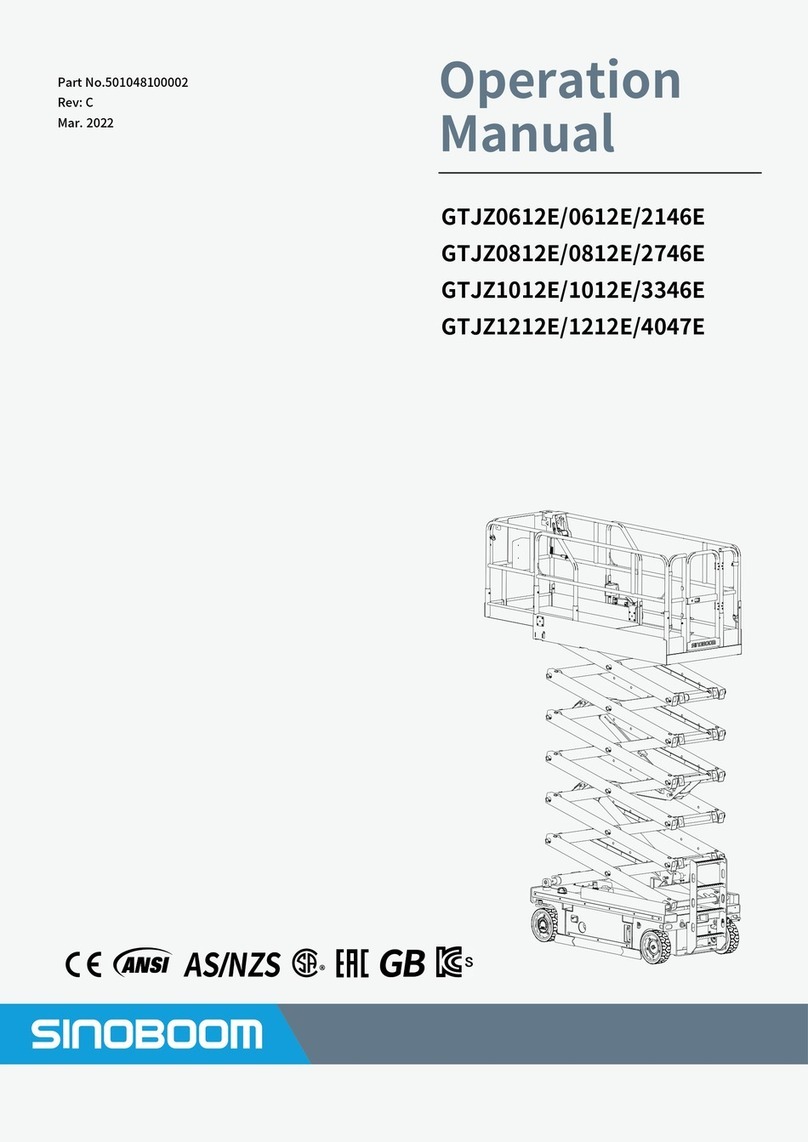
Sinoboom
Sinoboom GTJZ0612E Operation manual
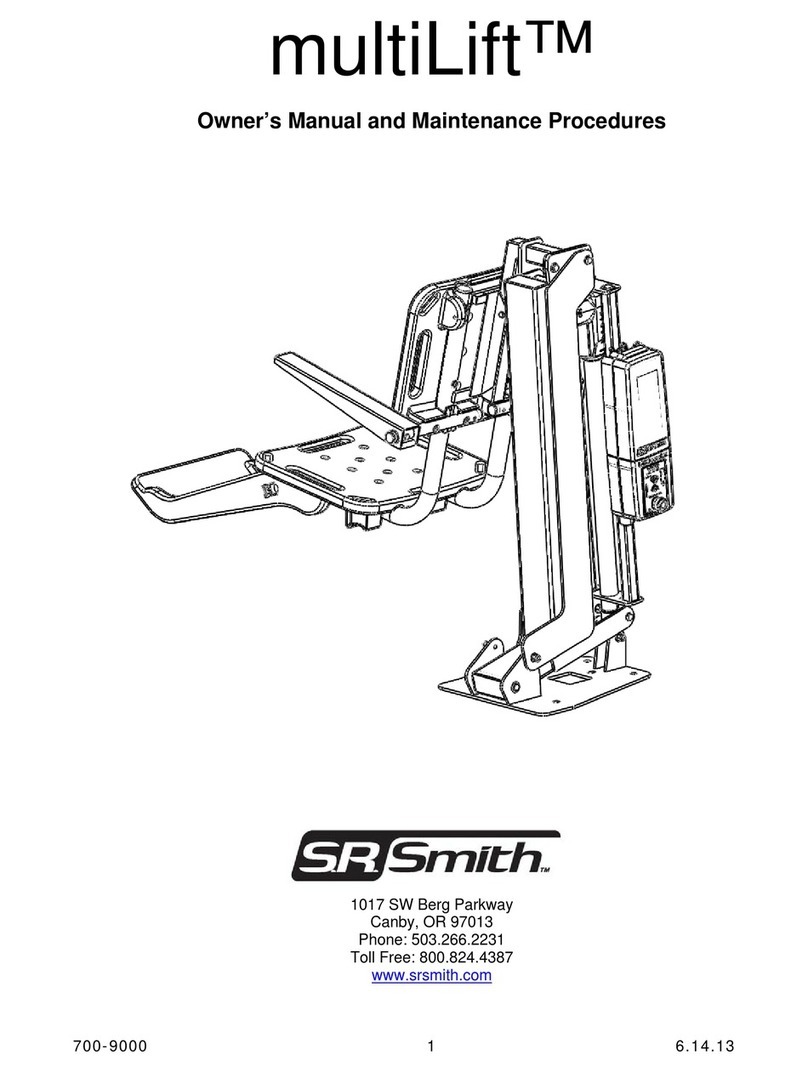
S.R.Smith
S.R.Smith MultiLift Owner's Manual and Maintenance Instructions
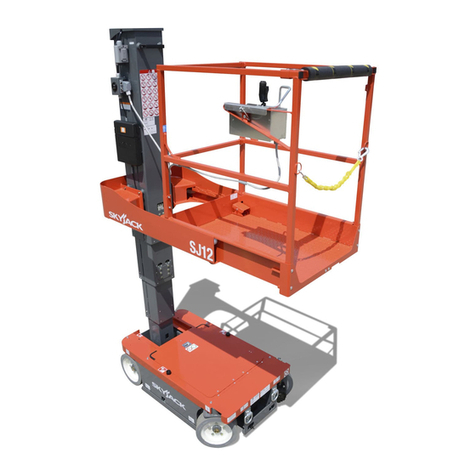
Skyjack
Skyjack SJ12 operating manual

Palfinger
Palfinger LIFTGATES ILM plus Series Troubleshooting
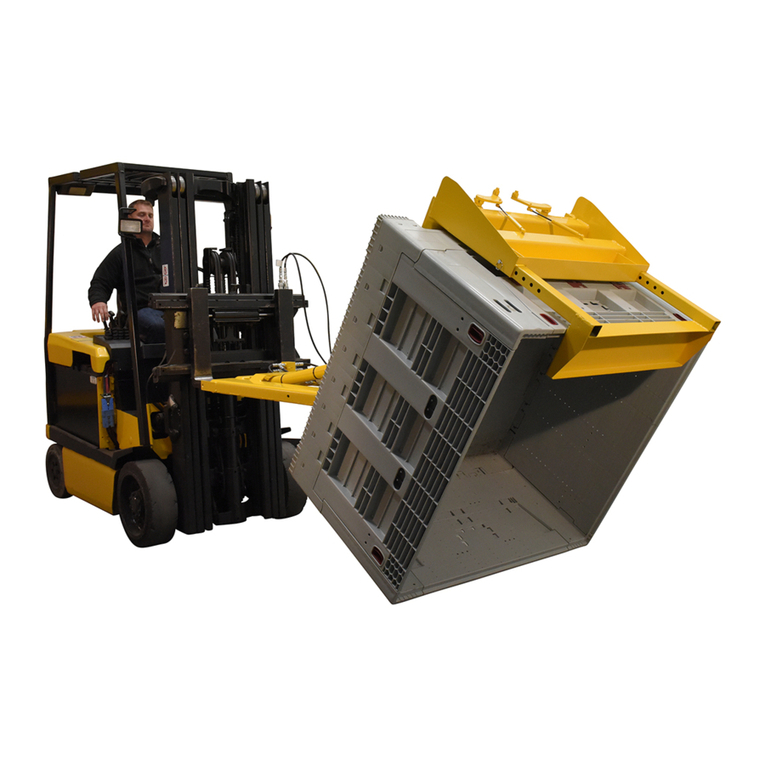
Vestil
Vestil CTD-H-TP-3000 instruction manual
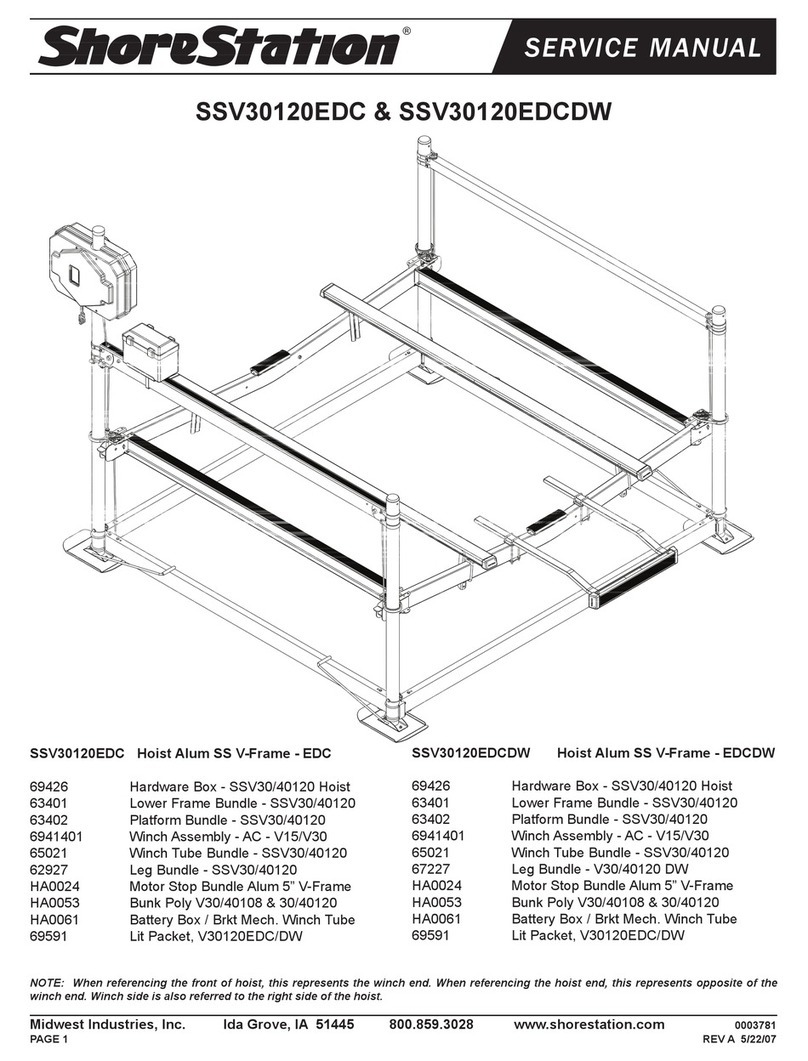
ShoreStation
ShoreStation SSV30120EDC Service manual
